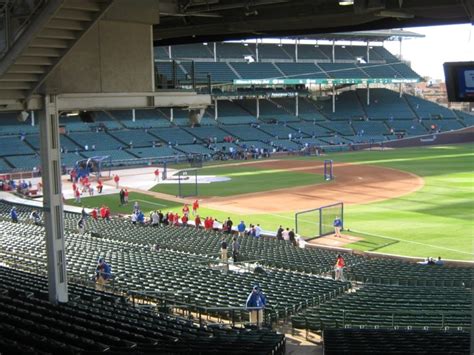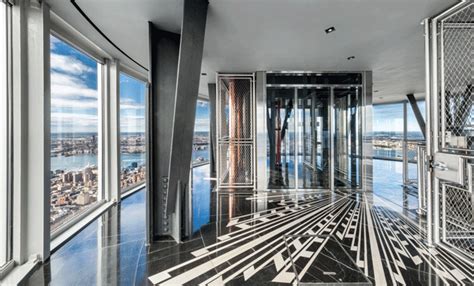Wrigley Field is one of the most iconic sports venues in the world. Located on the North Side of Chicago, Wrigley Field has been the home of the Chicago Cubs since 1916. While the stadium is beloved by fans, there is a shady side to the hallowed grounds.
The most notorious shady element of Wrigley Field history is the infamous Black Sox scandal in 1919. The 1919 World Series between the Chicago White Sox and the Cincinnati Reds was marred by allegations of players from the White Sox team taking bribes to throw the series. Eight players were eventually indicted and banned from baseball. While the players involved in the scandal weren’t from the Cubs, the scandal put a dark cloud over Wrigley Field for decades.
Another shady element of Wrigley Field’s past is the history of unsavory characters that the stadium has attracted. During the 1970s and 80s, Wrigley Field was a haven for drug dealers and prostitutes, as well as mobsters and organized crime figures who used the stadium as a safe haven for their illegal activities.
The shady side of Wrigley Field has also been linked to the performance of the Cubs. There have been numerous allegations that the Cubs have engaged in tanking games in an effort to secure higher draft picks. While these allegations have never been proven, they have been a source of contention among Cubs fans for years.
In recent years, the shady side of Wrigley Field has been represented by the ownership of the stadium. The Ricketts family has been accused of using shady tactics to pressure local businesses into selling their property in order to make way for the expansion of the stadium. Local businesses have also accused the Ricketts family of refusing to pay them for services rendered, and of using threats of legal action to force businesses to comply with their demands.
While the shady side of Wrigley Field is inextricably linked with its history, the stadium has become a much safer place in recent years. The Ricketts family has invested heavily in security and surveillance, and the Cubs have worked hard to create a friendly and welcoming environment for fans. As the stadium continues to evolve, the shady side of Wrigley Field is slowly but surely becoming a distant memory.
Exploring the Unfortunate History of Wrigley Field
Wrigley Field, located in Chicago, Illinois, is one of the most iconic baseball stadiums in the world. It has hosted all sorts of memorable moments – both happy and sad – over the past century. While the ballpark has witnessed some of the most glorious days in baseball history, it has also experienced its share of tragedy. In this article, we will explore the unfortunate history of Wrigley Field.
Built in 1914, Wrigley Field is the second-oldest ballpark in the major leagues, behind only Fenway Park. While the park has seen many memorable moments, it has also seen some tragedy. In 1938, a Chicago Cubs player named Hack Wilson died after a long battle with alcoholism. He had a drinking problem for many years, and his death was a tragic reminder of the dangers of alcohol abuse.
Another tragedy occurred in 1970, when a fan fell from the upper deck of the stadium and died. This was the first of several fatal fan falls that have occurred at the ballpark over the years. The most recent death occurred in 2015, when a fan fell to his death while attempting to catch a ball thrown by a player.
The stadium has also seen a few fires over the years. In 1934, a fire broke out in the center field bleachers, destroying the entire section. The fire was eventually extinguished, but not before causing nearly $100,000 in damages. In 1982, another fire broke out in the right-field bleachers, causing $500,000 in damages.
In addition to these tragedies, the stadium has also been the site of numerous protests. In 1974, a group of Native Americans staged a protest in the stadium to demand that the Cubs change their name from the “Chicago Cubs” to the “Chicago Native Americans.” The protest was soon quelled after an agreement was reached between the team and the protesters.
So while Wrigley Field is full of great memories and moments, it also has its share of tragedy and sadness. From Hack Wilson’s death to fan falls to fires, the stadium has seen its share of unfortunate events. But despite all this, Wrigley Field remains a beloved ballpark, and its fans continue to fill it with joy and excitement each and every day.
What’s the Dark Side of the Iconic Wrigley Field?
Wrigley Field is an iconic stadium, home to the Chicago Cubs since 1916. While it is a beloved landmark in the city and around the world, there are some dark sides to this legendary venue. This article will discuss what these dark sides are, and why they should be taken into account when visiting the park.
The first dark side of Wrigley Field is the high cost for tickets. With prices upwards of $100 for some games, this makes it difficult for locals to attend. Additionally, some of the best seats in the house are often reserved for corporate sponsors, which can make it even harder for the average person to get a seat.
The second dark side of Wrigley Field is the lack of nearby affordable housing. With gentrification taking place around the stadium, it has become increasingly difficult for those in the area to find affordable places to live. Additionally, the noise from the stadium can make it difficult for those living near it to get a good night’s sleep.
The third dark side of Wrigley Field is the lack of safety. With the large crowds, it is easy for incidents to occur. Additionally, the stadium does not have enough security personnel to keep guests safe. This can lead to a lack of security, which can cause visitors to feel unsafe.
The fourth dark side of Wrigley Field is the parking. With limited space available for parking, it can be difficult to find a spot close to the stadium. The limited spots available can also lead to traffic congestion, making it difficult to get to and from the stadium.
Finally, the fifth dark side of Wrigley Field is the limited access to public transportation. With limited train and bus routes near the stadium, it can be difficult to get to and from the stadium without a car. This can make it difficult for those without cars to attend games.
Overall, while Wrigley Field is an iconic stadium, it is important to take into account these five dark sides before visiting. From the high cost of tickets to the lack of nearby affordable housing and public transportation, these issues can make the experience of going to Wrigley Field less enjoyable.
 Road Topic Tourism & Travel
Road Topic Tourism & Travel




